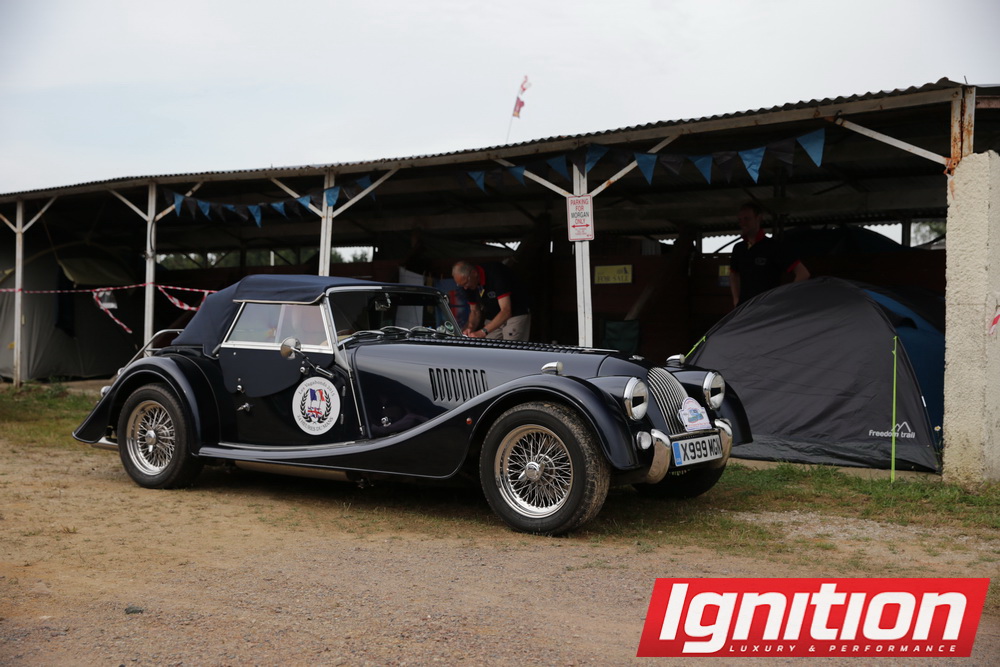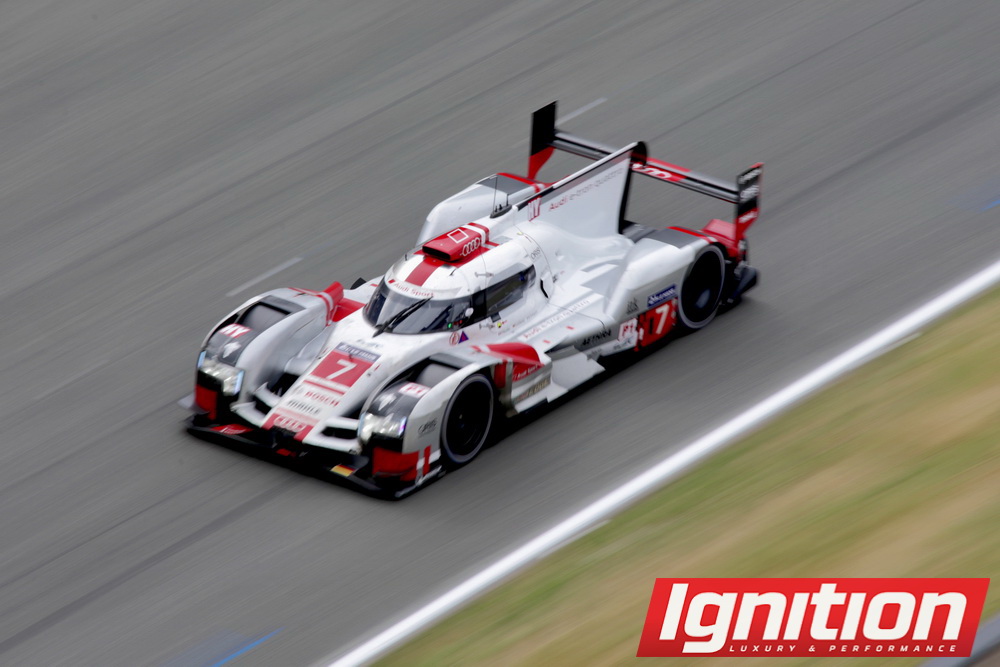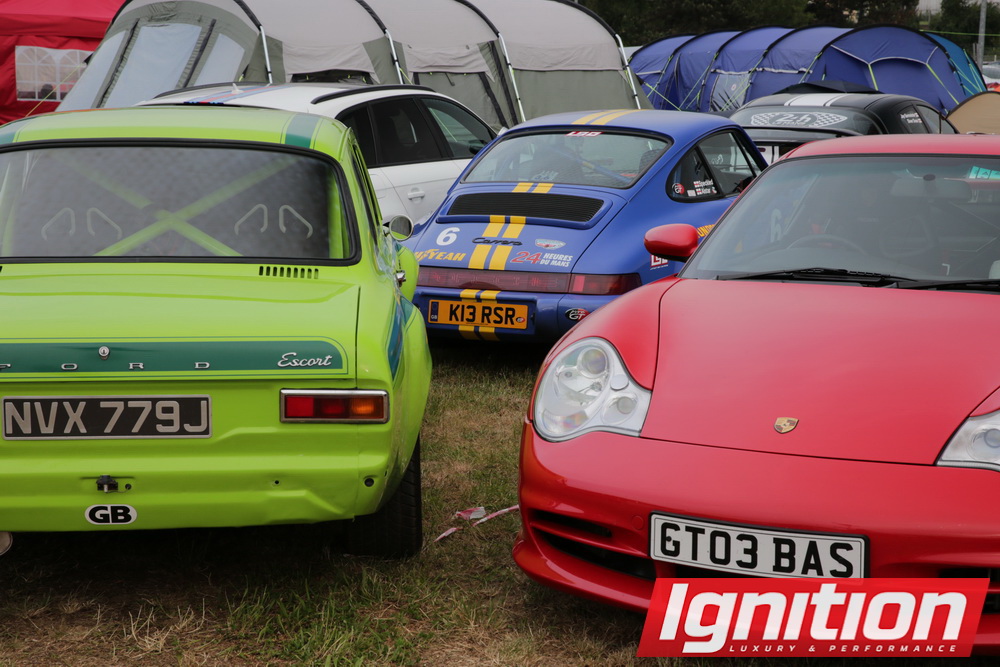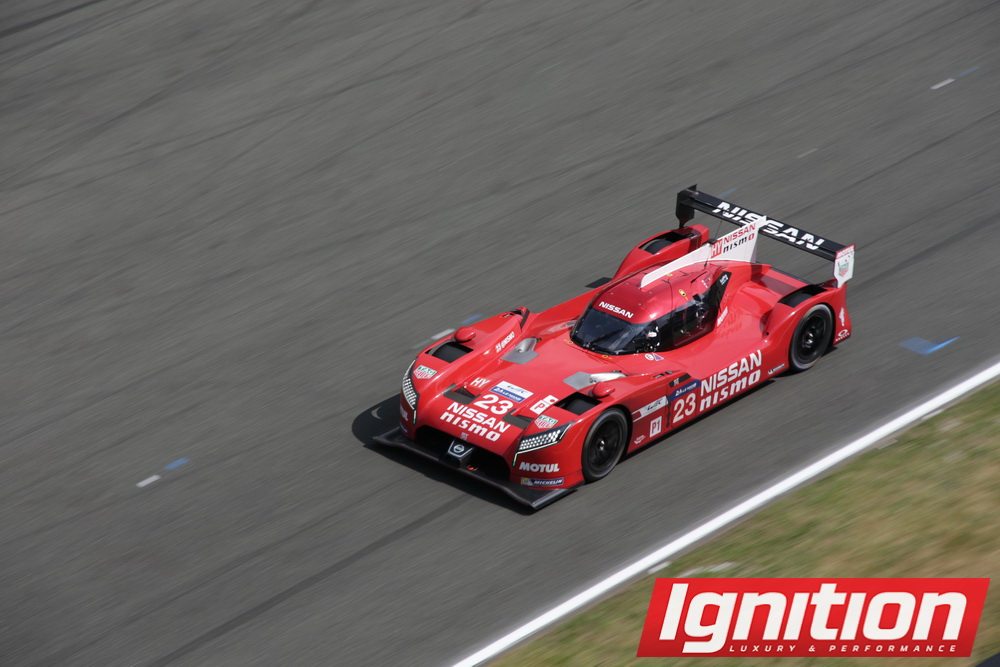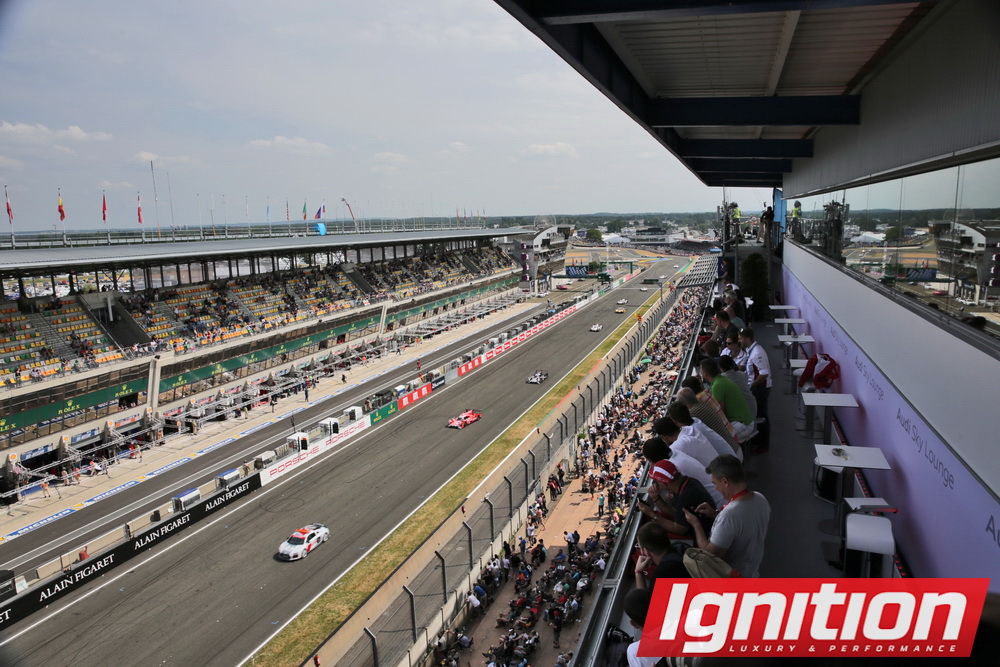
I didn’t get my photo credential for Le Mans. Despite having the necessary requirements, because of my late request (I found out my acceptance beyond deadline, but they graciously offered me a temporary bib and journalist credential as a backup) and late arrival to the Le Mans festivities, when I arrived at the media offices I was told they ran out of photo bibs.
No wonder. This is the greatest race in the world.

In 2013 it set records with 24.4 million TV viewers and was broadcast to 190 countries. This year broke attendance records with 263,500 visitors. It’s had more manufacturer involvement year over year than any series – let alone race – globally, and many combined. To manufacturers like Nissan, which opted for a front-wheel drive-only, hybrid prototype racer, it’s the test bed and the most relevant and demanding form of racing. It’s the 24 Hours of Le Mans.
It’s a race I’ve been waiting to attend since I was just 10 years old. The McLaren F1 GTR – a design and engineering marvel from Gordon Murray – was beating cars that, unlike itself, were purpose-built for racing. It was the dawn of an era when GT1 cars outworked, outpaced, and out-relevanced cars designed specifically for the sport and that day in particular.
For one reason or another, without any education on it, the race to me was of mythical lore. It was a place where only the best were allowed, and only those greatest competed, the winners etched into a short list where some of the most deserving have never been awarded.
It is the perfect symbiosis of engineering: man and machine.
So when I was allotted the chance to attend alongside Audi Canada, the moment took a bit to sink in. In my previous role as a senior editor with an automotive publication once entrenched in motorsport, and a passionate photographer of motorsport and automotive culture, it felt like a dream. I’ve shot American Le Mans, DTM, United SportsCar, IndyCar and F1, but this was something else. Being invited by the manufacturer who has dominated arguably the most progressive era of the sport, 10 of the last 11 races, and 13 of the last 15 going into this year (those only losses coming at the hands of the Bentley and Peugeot 908, whose program was cut far too short) meant something great.
I don’t often write personal entries, but if there is any reason to do so, it’s Le Mans.
Upon hearing of the incredible offer from Audi Canada, mission one was lining the ducks up (credentials, gear, insurance, schedules, photo sights, etc.). When that was complete, the story lines began to formulate – some with, and some without, the final outcome in mind. But that all-important photo credential hung in the balance. To be able to recreate those images which – before YouTube, Facebook and online magazines – entrenched themselves as the essence of the sport in my mind would be a true honour.
When I arrived at the circuit and walked through the kilometres of stagnant traffic to the credential office and was told they handed out the last of the temporary bibs, my initial reaction was disappointment. Six-thousand and 62 miles, a two-hour train ride, and a unique opportunity to shoot at the circuit running through the French countryside just feet away from one-off machines flying past at 330 kilometers an hour will do that.
But that disappointment washed away when it all sunk in.
I realized that I was just one of a quarter-million attendees at the Circuit de la Sarthe for the exact same reason. We were amongst the greatest machines and creative pieces of art of our time, as well as being amongst some of the most revered from the past.
The original Porsche 911, Carrera RS, Audi Quattro, Jaguar XK 140, a Ferrari Dino, not one – but two Marcos Mantises, a Noble M400, the Julian Thompson-designed Lotus Esprit, an Alpina A310, and even a ’73 Dodge Charger R/T. And that was a drop in the bucket.
Lodged with my camera gear, I set out to discover just a sliver of who’d brought what here, and why. Shooting at will and with little regard to technique, I decided to capture some of the essence of what Le Mans is really about.
Because, while 263,499 other people may have been in attendance and la Sarthe is a mind-boggling 13.629 kilometres long, everyone has their own reason for being here. Not every person is here to watch the race in its entirety, and some were likely dragged along with little to no background knowledge whatsoever. It’s completely acceptable, because there’s plenty to get you up to speed.
Although Le Mans is the most intense and technologically-advanced race in existence, it is much more than just on-track action. The festival atmosphere is infectious.
In the week leading up to the green flag on Saturday, fans are given the opportunity to fully immerse themselves in a variety of experiences: free access to Place de la Républic in Le Mans town centre for scrutineering procedures, karting and simulator events, a fan car show-off, driver autograph sessions, practice sessions, a Ferris wheel overlooking the track, and the 2015 showcases that included the Ford/Ferrari exhibition and “Women’s Pavillion” dedicated to women in motorsport.
Leading up to the race on Saturday was the “Le Mans Legends” race with cars from 1949 to 1968, followed by a list of Aston Martins for their special track event, which included everything from the Aston Lola LMP1 DBR1-2, the DBR9, V12 Vantage GT3 and even a V12 Zagato tracking at speed. While our convoy wasn’t able to catch the events, it wasn’t long before we were told of them.
When the green flag had waved and Porsche took off with the first three positions ahead of the Audis and Toyotas, there was not an inch of ground available on the front straight. It was one of the most anticipated battles in the modern era and it was clear early on that, reliability aside, this race was between the Audi R18 and Porsche’s 919 Hybrid.
Both turbocharged, both hybrid power plants – Audi’s 4.0-litre V6 versus Porsche’s 2.0-litre V4 – and each pushing nearly 1,000 total horsepower.
With the 919 Hybrid leading the race hours in, my real adventure began. First was a Morgan collection from a number of owners who drove their wire-wheeled masterpieces from the U.K. in what seemed to be like an exhibition in pattern art.
Then, a trio of Ford Escort RS Cosworths. The owner of the middle car wanted to keep it rightfully stock, but decided to dump the OZ 16-inch wheels for a set of 18-inch Monte replicas in the same finish to give the car an updated appearance without tarnishing its original persona.
Close by sat a 1968 Aston Martin DBS with suspicious badging: on the front fenders, an “F1” badge which turned out to be nothing but a hoax, and up front, an “ERIC Equipped” plate mounted on the grille, one of many I saw over my more than 78 kilometres hiked over the Saturday and Sunday.
It turns out ERIC Equipped is an exclusive, invite-only club formed in 1979 with some of the rarest and most sought-after sports cars on that side of the Atlantic. Take a look at http://www.qlift.co.uk/eric/eric-cars.html for more info.
The campgrounds are littered with cars and campers and creative tent contraptions. Rope lighting and double-tiered barbecues with enough meat to feed the entire Corvette team twice over are being towed behind Renaults. VW campers are showing their worth.
To someone born long after the swingin’ ’60s, this might as well be the modern day Woodstock.
That couldn’t be more evident when I spot a trio of classics: left, a lime green 1971 Escort Mexico, in the middle, a blue 964 Carrera 2 littered in yellow decals, and to the right, a 996 that apologetically gets easily overlooked.
As I’m shooting, a gent pops up and introduces himself as Lincoln Biggs, the friend of the owner of the car. “I can get him for you,” he says in a strong UK accent. “You want to shoot it? I’ll grab you a beer if you want.”
What resulted was an exercise in vehicle maneuvering, fence and barrier removal, and an impromptu photo shoot. The pristine Escort, named after Hannu Mikkola’s win in the 1970 London to Mexico World Cup Rally, was finished by owner Gregory Taylor just days prior to Le Mans and made its maiden voyage from England to France without a quarrel. It was joined by Chris Bedrock’s freshly-decaled red VW GTI and a Vauxhaul Astra VXR driven over by James “Fanny Jr.” Fanstone.
Fanny’s dad was at the race a year prior and passed before they could make the trek back in 2015, but in many ways he was still there. In an incredible example to show just what this race – and this event – means to so many people, Jr. spread a portion of his father’s ashes at Le Mans.
Being told this while sipping a complimentary beer and seeing the 20-plus members of “Smash Dot Racing” laugh and invite me into their circle gave an entirely new perspective to the race.
The success and charm of Le Mans comes as much from the people as it does the cars on (and off) track.
After finishing the photo shoot, my beer, and accepting a generous offer to throttle up the blue, straight-piped 964 Carrera 2 by its owner, James Stewart, it was off to bed, thinking what happened there might carry the same weight as when I’ve met the sport’s most esteemed icons.
After just a few hours sleep and a cool night that saw the #17 Porsche overtake the #7 Audi for second overall, it was up for the final sprint to the finish.
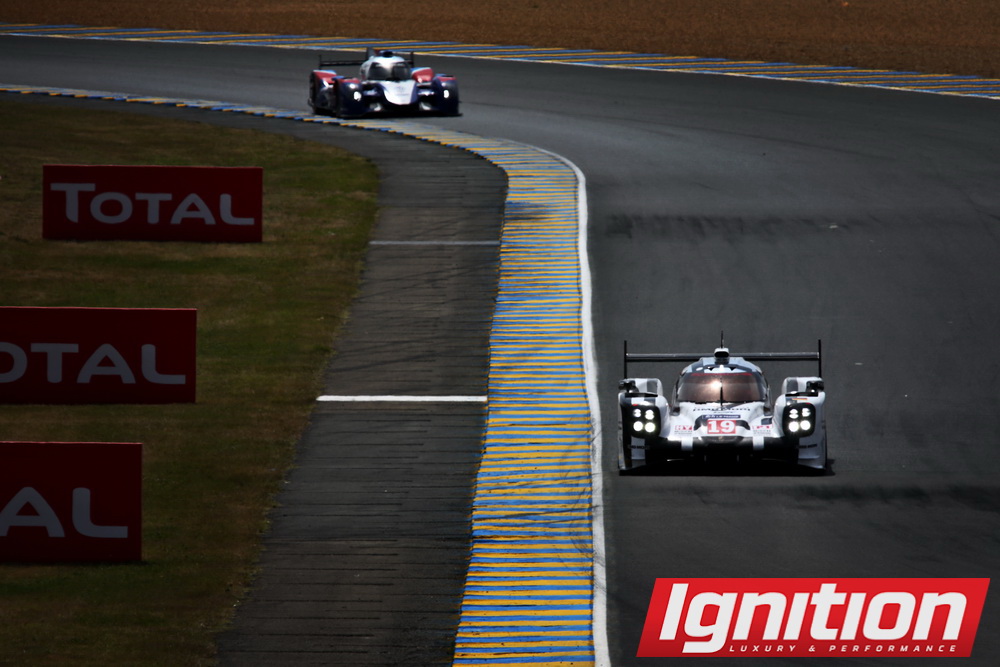
The Porsche V4 engine – uncharted territory for the Stuttgart manufacturer’s road cars (for now) – showed its immense capability and durability by capturing the 24 Hours in just its second year back in the top category after a 16-year absence. The #19 captured Porsche’s record 17th overall win (395 laps complete), followed by a second place with the #17 (394 laps).
Audi, while being denied its 14th victory, still flexed its muscle with the #7 car which finished in third place (393 laps) and set a lap faster than any car in the history of the legendary circuit: a 3:17.476 time at an average speed of 248.459 km/h.
The race was a microcosm of the close battle for the remainder of the World Endurance Championship season, and a technological race that will push the sport to new heights for years to come.
So, while I didn’t get a photo credential as I’d hoped, the 2015 running of Le Mans offered an experience I never would have understood.
The success and charm of Le Mans comes as much from the people as it does the cars on (and off) track. And for that reason, it should be a bucket list item on anybody’s list.
[widgetkit id=9]





















